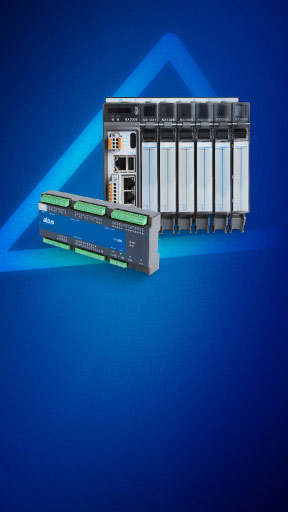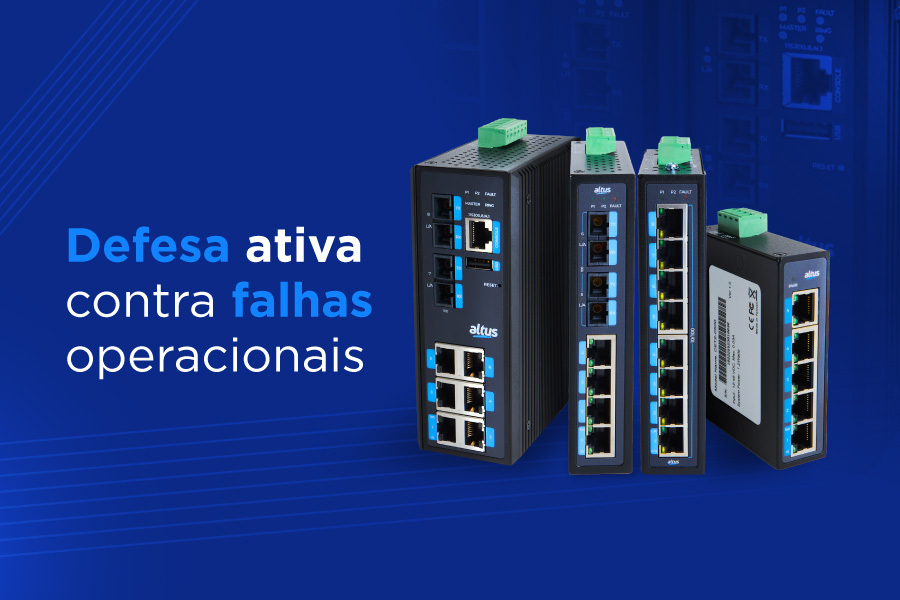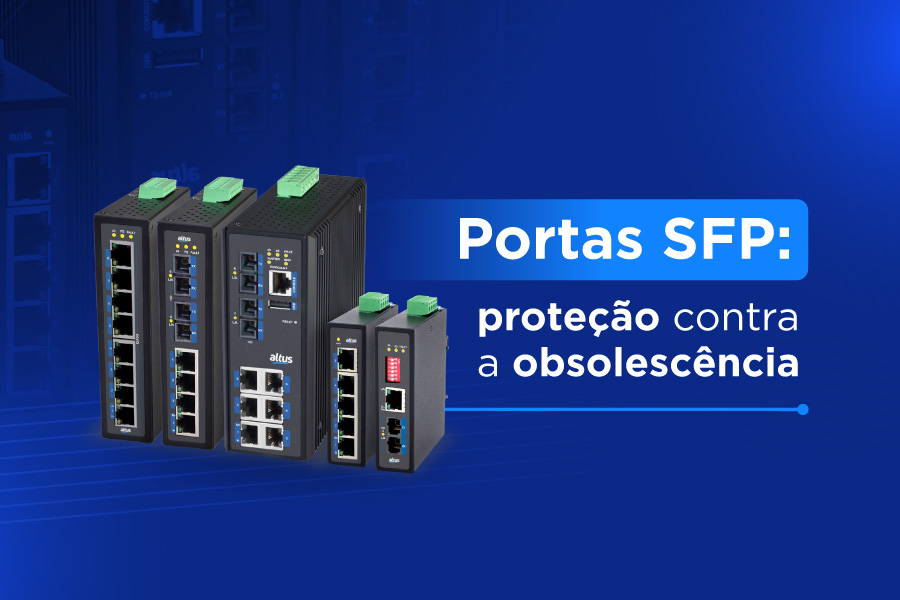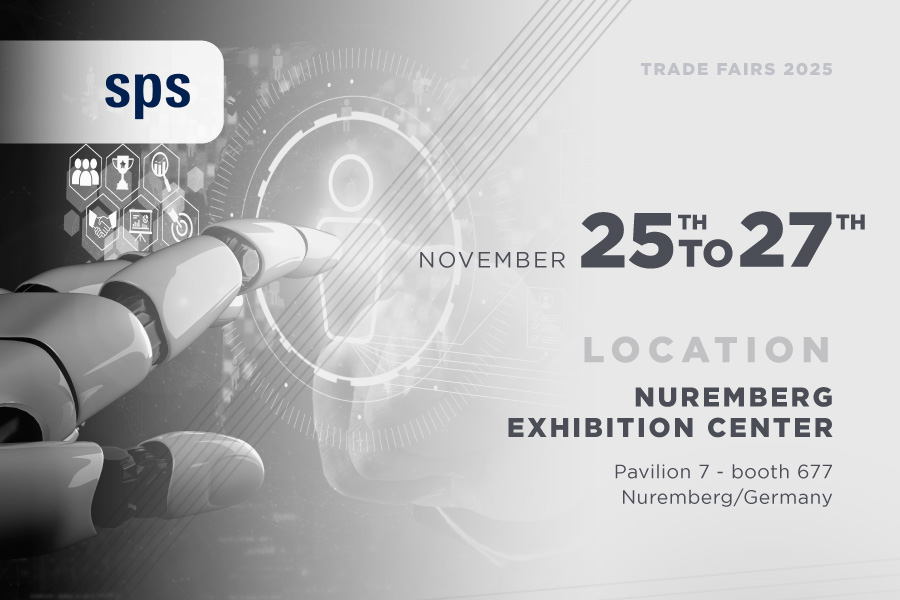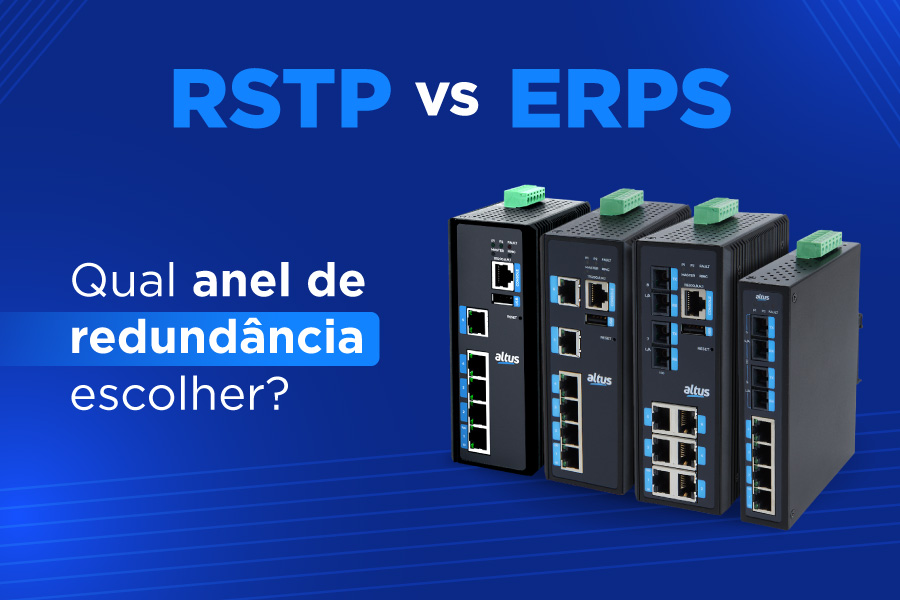PROFINET is one of the most widely used communication protocols in industrial control and supervision networks. Responsible for establishing communication between systems and devices in approximately 20% of automation applications present in the global market, the protocol is widely used in the control of critical processes that require high availability. One of the features that provides this high reliability is the PROFINET MRP standard for ring architecture.
Have you ever heard of this feature? In this article, we will explore in detail the relationship between the PROFINET protocol and the MRP standard, and how they can be used to create ring architectures, adding high availability to control and supervision systems.
What is the PROFINET Protocol?
Developed by PROFIBUS & PROFINET International (PI), PROFINET is one of the most widely used protocols in the world, especially in Europe. The standard enables the exchange of a large volume of data using the same electrical model adopted by traditional Ethernet networks.
This consolidation opened up a range of automation solutions, thanks to the ability to manage data traffic and the high speed provided by Ethernet.
O protocolo tem um perfil aberto que cobre todos os requisitos da tecnologia de automação industrial. O modelo tem 100% de compatibilidade com os padrões IEEE e atende aos requisitos de sistema com sua topologia flexível.
Ao utilizar o protocolo PROFINET, é possível construir uma comunicação transparente entre o gerenciamento, a supervisão, o controle e os dispositivos de campo, tudo isso respeitando os requisitos de desempenho peculiares a cada um dos equipamentos de automação industrial.
Assim como o PROFIBUS, o PROFINET é amplamente utilizado na indústria de processos, podendo ser encontrado no chão de fábrica, em transdutores, transmissores, entre outros vários dispositivos.
Com diferentes padrões, o modelo PROFINET oferece suporte para uma ampla variedade de redes Ethernet Industrial. Abaixo, exploramos rapidamente cada um deles em relação às suas características e aplicações.
Os diferentes tipos do protocolo PROFINET
PROFINET I/O (Input/Output): utilizado para comunicação de dados entre dispositivos de entrada e saída e CLPs, é o padrão mais aplicado em automação industrial para controle e supervisão de dispositivos de campo.
PROFINET RT: o padrão RT oferece comunicação em tempo real, o que o torna ideal para aplicações industriais que exigem comunicação rápida, mas sem necessidade de sincronização exata.
PROFINET IRT (Isochronous Real-Time): o protocolo é uma extensão do PROFINET RT, porém, oferece comunicação determinística em tempo real com alta precisão temporal. Ideal para aplicações que requerem sincronização rigorosa e baixa latência, como controle de movimento em máquinas, robótica e automação de processos de alta velocidade.
PROFINET CBA (Component Based Automation): o padrão tem uma abordagem baseada em componentes que permite a configuração modular e reutilizável de sistemas de automação, facilitando a integração e manutenção. Ele é usado para automação de sistemas complexos, onde a modularidade e a reusabilidade de componentes são importantes.
PROFINET I/O Device Redundancy: Este padrão oferece redundância de dispositivos de entrada e saída para garantir a continuidade operacional em caso de falhas de dispositivos. Essencial em aplicações onde a disponibilidade do sistema é crucial, ele garante que falhas em um dispositivo não interrompam o processo de automação.
PROFINET MRP (Media Redundancy Protocol): o PROFINET MRP é um protocolo que oferece redundância de mídia para garantir alta disponibilidade à rede, permitindo recuperação rápida em caso de falhas de rede. Vamos falar mais sobre o padrão nos próximos parágrafos.
O que é PROFINET MRP e como ele funciona?
Sigla em inglês para Protocolo de Mídia Redundante (Media Redundancy Protocol) o MRP é um protocolo de rede que pode ser utilizado em alguns dispositivos compatíveis com a tecnologia PROFINET. Ele permite configurar redes em topologia anel, criando pequenos domínios individuais dentro de grandes redes.
Para que uma aplicação utilizando essa topologia seja possível, apenas dispositivos que fornecem pelo menos duas portas Ethernet podem ser incluídos em um anel MRP. Para dispositivos com mais de duas portas, é necessário configurar quais portas serão usadas como portas de anel para estabelecer a ligação em série.
A configuração do MRP em uma topologia de anel requer que todos os nós suportem MRP, e pelo menos um deles deve atuar como Manager da rede, o chamado MRM (Media Redundancy Manager). Assim, se por qualquer motivo a transmissão for interrompida, o gerenciador de anel pode ativar imediatamente a comunicação alternativa em um intervalo de milissegundos.
O MRM monitora e controla a topologia em anel, enviando continuamente frames de teste para percorrer toda a extensão da rede. Esses frames são encaminhados através das portas de anel de todos os Clients, chamados de MRC (Media Redundancy Client).
Um MRC é um dispositivo que atua apenas como um “repassador” de frames e geralmente não assume um papel ativo. Se um MRC detectar uma falha, como queda de conexão, ele pode enviar uma mensagem especial ao MRM informando sobre essa falha, reduzindo o tempo de reconfiguração da comunicação.
O anel MRP é considerado como duas topologias em linha em que todos os clientes permanecem conectados ao manager. Enquanto o manager receber o quadro de teste em sua outra porta, ele considera que as conexões de rede estão intactas. Nesse cenário, o MRM bloqueia uma de suas portas, e os pacotes de dados são transmitidos apenas em uma direção do anel.
Caso contrário, se uma seção do anel for interrompida, o MRM acaba não recebendo os frames em ambas as portas. Ele então informa aos MRCs sobre o erro de rede e ativa sua porta de anel anteriormente bloqueada.
Não importa se a interrupção é causada por um erro na mídia de rede ou em um dos dispositivos que retransmitem os dados. Após o erro de rede ser corrigido e a topologia de anel ser fechada novamente, o MRM bloqueia sua segunda porta de anel novamente e o “cenário de anel fechado” é válido novamente.
Outra forma de aumentar a confiabilidade da rede é através da utilização de vários MRMs no mesmo anel, prevendo a possibilidade de falha do manager principal. Nesse caso, todos os possíveis managers devem ser configurados como manager-auto. Apenas um dos dispositivos configurados como manager-auto realmente funcionará como gerenciador, e o restante funcionará como cliente.
Manual PROFINET Altus
Para auxiliá-lo a extrair a capacidade máxima das suas redes de controle PROFINET, os especialistas do nosso time de P&D desenvolveram um manual detalhado sobre o protocolo. Nele, você vai encontrar descrições técnicas detalhadas que irão lhe ajudar a entender as complexidades dos conceitos de comunicação do protocolo, oferecendo uma base sólida para implementar o PROFINET em aplicações que utilizam os CLPs da Altus.
Preencha o formulário abaixo para baixar o manual e qualificar ainda mais sua experiência com os CLPs Altus e o protocolo PROFINET.
As vantagens de utilizar uma arquitetura anel
A arquitetura em anel é um tipo de configuração de rede onde os dispositivos são conectados de forma circular, formando um loop fechado. Nesse arranjo, cada dispositivo está ligado a exatamente dois outros integrantes da rede, criando um caminho contínuo para a transmissão de dados. Isso significa que os dados viajam em apenas uma direção ao redor do anel, passando por cada dispositivo até alcançar seu destino.
Em uma arquitetura em anel, os dados são transmitidos de um dispositivo para o próximo de maneira sequencial. Quando você envia dados do seu dispositivo, eles viajam para o próximo integrante da rede em anel, e esse equipamento os passa para o próximo, até que os dados cheguem ao destinatário final. Cada dispositivo no anel atua como um repetidor, retransmitindo os dados e garantindo que continuem a fluir ao redor do anel.
Uma vantagem da topologia em anel é que ela fornece acesso igualitário a todos os dispositivos na rede. Como os dados viajam em um caminho circular, cada dispositivo tem a mesma oportunidade de enviar e receber dados.
Além disso, redes em anel podem lidar com grandes cargas de dados de forma mais eficiente, porque cada dispositivo possui slots de tempo dedicados para transmitir dados, reduzindo as chances de colisões.
Rede em anel PROFINET MRP com a CPU NX3008
Criada para atender às demandas de uma indústria cada vez mais conectada, a NX3008 CPU. conta com uma ampla variedade de interfaces de comunicação capazes de conectar o equipamento aos mais diferentes sistemas e máquinas do mercado. O dispositivo de controle mais avançado da Série Nexto possui 03 portas Ethernet, sendo 02 com suporte ao protocolo de comunicação PROFINET Controller protocol,, o que permite que o controlador seja utilizado em uma rede com arquitetura em anel MRP.
Totalmente aderente ao universo IoT, a CPU também tem capacidade de escrita direta em banco de dados MSSQL e interação direta com os serviços de hospedagem na nuvem mais relevantes do mercado, como Microsoft Azure, IBM Cloud, Google One e Amazon AWS. A unidade ainda possui um diferencial presente em poucos CLPs do mercado: ela conta com WebServer embarcadoa tool that enables the creation of application supervision and monitoring screens without the need to use a SCADA equipment.
Another key differentiator is the Embedded VPN, o que cria um túnel privado de conexão direto com a CPU. Essa funcionalidade permite que você acesse a rede de controle do seu negócio de forma remota e completamente segura. Para aumentar ainda mais a segurança do produto, a CPU possui um recurso de firewall.
A CPU também conta com suporte a conexões do tipo FTP, o que habilita o dispositivo a trocar dados com um servidor que utilize este modelo de tecnologia. Essa funcionalidade permite que os pacotes de dados gerados pelo controlador, como logs coletados através de uma função datalogger, sejam acessados à distância.
The CPU also includes an native Docker platform,. O recurso, nativo na CPU, torna possível a virtualização de softwares desenvolvidos para sistemas operacionais com tecnologia Unix. O recurso dá mais versatilidade e velocidade à operação do sistema, pois permite o processamento de múltiplos dados dentro da própria CPU.
Clique no banner abaixo para visitar a página oficial da NX3008, um produto global com funcionalidades avançadas de software e segurança cibernética capazes de integrar de forma dinâmica as áreas de TI e TA de uma indústria.
